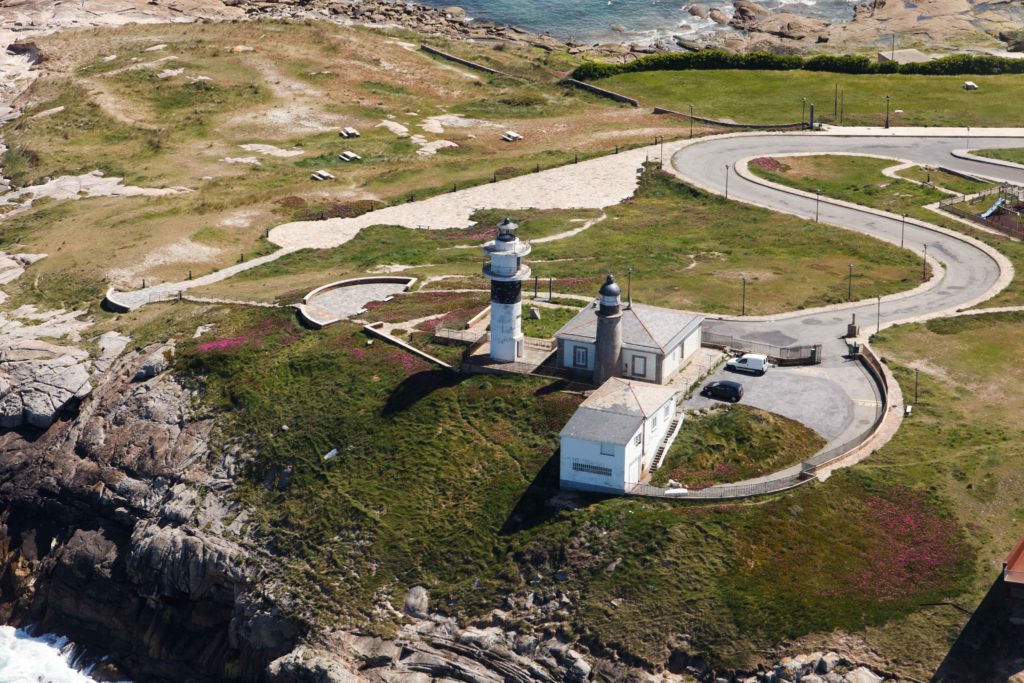
In 1860, a 6th order light was approved in the Atalaya de San Cibrao to warn navigators of where this port is located, at a time when there was a good deal of traffic due to the activity of the Sargadelos ceramics and smelting factory besides other ships transporting masonry.
This project dates back to 1861, and was conducted by the engineer, Marcelo Sánchez Novellán, also author of the Lighthouse on the island called Coelleira (in the Ria of O Barqueiro). It was budgeted for 46,836 reales and approved by Royal Order on July 23rd, 1861. It had an optical device with a range of 150 nautical miles focal distance and an octagonal lantern 1.50 m in diameter. It had a moderating lamp operated by a single keeper. The building, similar in type to that on Coelleira Island, is erected on a base of 16.20 x 16.80 m elevating it slightly from the ground, isolating it from the surrounding sandbank. The building is square-shaped and 11 m along the side.

In 1883, the lamp was changed by one with a single wick and then by another using gasoline. In 1905, it was agreed to change the appearance from a group of 3 plus 2 white occultations, adapting it to a system of revolving screens mounted on a mercury float, activated by a watchmaking machine, which entered into service on September 29th, 1922.
With the coming into operation of the aluminium factory and its port, maritime traffic was to become very important. This was the reason that led to the construction of a new, more elevated, longer ranged lighthouse located next to the original one. This includes a standard type tower, 3 m in diameter and 13.70 m in height, painted white with a black stripe. This was equipped with an electric-gas system with a 500w lamp and 500 mm drum optics.

With the adoption of the lighthouse, in 1993, by the Port Authority of Ferrol-San Cibrao, the electric-gas system was done away with and a completely new lighting equipment was installed, powered by batteries and an invertor charged to transform the direct current of the batteries into alternating current, in the event of power grid failure. The lighthouse was also fully monitored to be supervised from the Control Centre located in the Port of Ferrol. In 2002, there was an important rehabilitation and improvement in both the lighthouse in service and the other buildings. In 2007, a significant improvement was made in the area surrounding the lighthouse for public use.
In 2015, the existing lighting equipment was replaced by a 60w LED lamp.